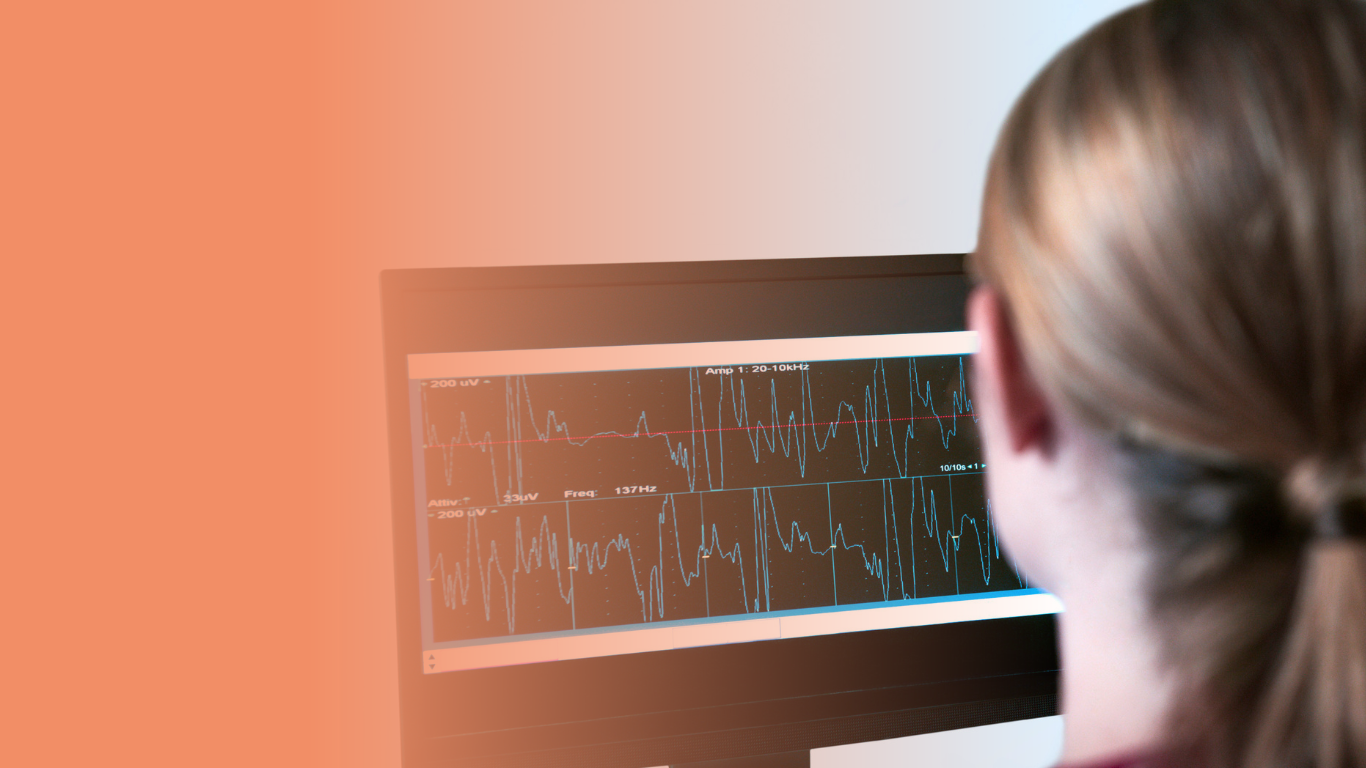What is an Ambulatory VEEG?
Ambulatory VEEG is a portable, non-invasive test that continuously records your brain’s electrical activity (EEG) alongside video monitoring over a 24- to 72-hour period—or longer if needed. Unlike traditional EEG performed in a clinic, this test is done at home, allowing for natural activity and sleep patterns to be observed while capturing potential seizure or abnormal brain activity in your normal environment.
Who Needs an Ambulatory VEEG?
Your Florida Neurology provider may recommend an ambulatory VEEG if you experience:
- Episodes of staring spells, confusion, or blackouts
- Unexplained seizures or convulsions
- Daytime or nighttime spells suspected to be epilepsy
- Psychogenic non-epileptic events (PNES) or fainting that may resemble seizures
- Seizure monitoring when medication is being adjusted
This test is especially useful when in-office EEG has been inconclusive or when capturing events during sleep or daily activity is important.
How Does the Test Work?
Setup in Our Office: Our team will apply electrodes to your scalp and provide you with a small recording device and wearable camera system to capture both EEG data and real-time video.
Monitoring at Home: You’ll wear the equipment as you go about your normal routine. The lightweight setup allows for comfort during sleep, work, and other activities.
Event Log: You will be given a journal or event button to log any unusual sensations, spells, or symptoms during the test.
Return & Review: Once the monitoring period is over, you’ll return the equipment. Our neurologists will review the synchronized video and EEG data to identify patterns and accurately diagnose your condition.
Why Choose Ambulatory VEEG Over Inpatient Monitoring?
- Comfort of testing in your own home
- Longer monitoring window to capture less frequent events
- Cost-effective compared to hospital-based VEEG
- Real-life context: Allows us to see how brain activity corresponds to your normal activities
What to Expect
- The equipment is discreet and easy to wear.
- Avoid strenuous activity or bathing during the test.
- You’ll be provided with clear instructions and 24/7 support during the monitoring period.
- Results are usually available within 7–10 business days after the test is completed.
Schedule Your Ambulatory VEEG Today
If you or a loved one are experiencing symptoms that may be seizure-related or remain unexplained, Ambulatory VEEG can offer the answers you need. At Florida Neurology, our experienced team will guide you through the process from start to finish with expert care and compassion.
Other Services
FAQs
What is the difference between a migraine and a tension headache?
Migraines are severe headaches often accompanied by nausea, vomiting, and sensitivity to light and sound, typically affecting one side of the head. Tension headaches cause a dull, aching pain around the forehead or back of the neck and head without the additional symptoms of migraines.
How is Alzheimer's disease diagnosed at Florida Neurology?
Alzheimer's is diagnosed using a combination of cognitive assessments, brain imaging (such as MRI or CT scans), blood tests to rule out other conditions, and a neurological exam to assess brain function and symptoms.
What treatment options are available for stroke patients at your Stroke Clinic?
Treatment options include thrombolytic medications (to dissolve clots), endovascular procedures (to remove clots or repair ruptured vessels), blood-thinning medications, and rehabilitation therapy to help patients regain mobility, strength, and cognitive abilities.
What are the early signs of cognitive and memory disorders, such as dementia or Alzheimer’s disease?
Early signs include memory loss, confusion, difficulty with problem-solving, changes in behavior, trouble with language, and disorientation in familiar settings or with time.
What causes vertigo, and how is it treated?
Vertigo can be caused by inner ear issues, such as benign paroxysmal positional vertigo (BPPV), Meniere’s disease, or vestibular neuritis. Treatment often includes vestibular rehabilitation exercises, medications to reduce dizziness, and in some cases, procedures to reposition inner ear particles.
How can I manage chronic migraines?
Chronic migraines can be managed with prescription medications like triptans, Botox injections, lifestyle changes (avoiding triggers, improving sleep), stress management techniques, and preventive medications to reduce frequency.
What is the process for diagnosing Multiple Sclerosis (MS)?
MS is diagnosed through a neurological exam, MRI to detect lesions in the brain and spinal cord, lumbar puncture (spinal tap) to check for abnormal immune activity in the cerebrospinal fluid, and evoked potentials to measure nerve function.
What types of headaches do you treat at the Headache & Migraine Clinic?
The clinic treats various types of headaches, including migraines, tension headaches, cluster headaches, and chronic daily headaches caused by medication overuse or other factors.
What therapies are offered for patients recovering from a stroke?
Stroke recovery includes physical, occupational, and speech therapy to improve strength, coordination, communication, and daily functioning. Medications and lifestyle changes are also incorporated into long-term recovery plans.
How is Bell’s palsy treated, and how long does recovery take?
Treatment for Bell’s palsy often includes corticosteroids to reduce nerve inflammation, antiviral medications if a viral infection is suspected, physical therapy to restore muscle function, and eye protection to prevent damage. Most people recover fully within a few weeks to months.



